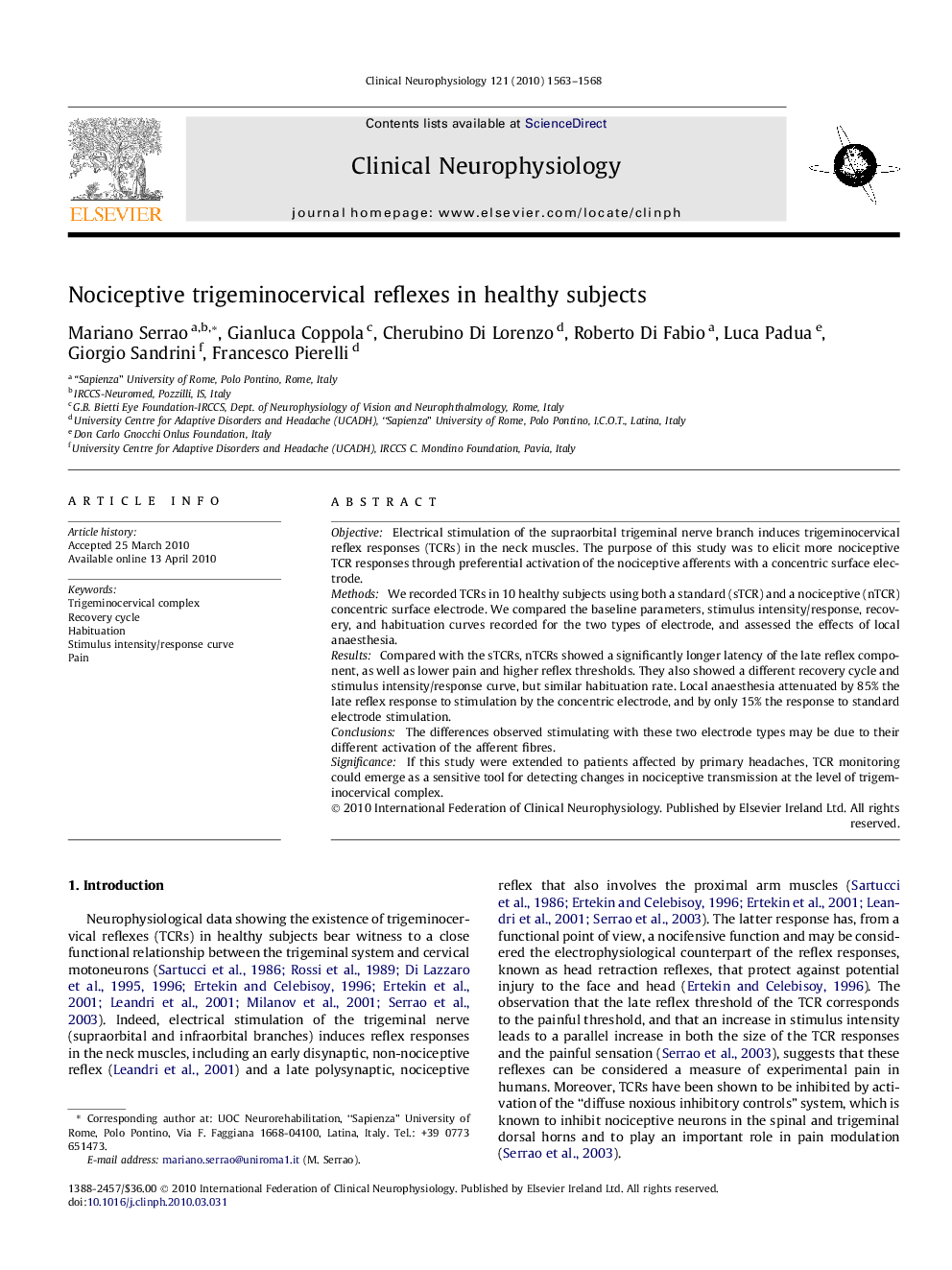| Article ID | Journal | Published Year | Pages | File Type |
|---|---|---|---|---|
| 3045603 | Clinical Neurophysiology | 2010 | 6 Pages |
ObjectiveElectrical stimulation of the supraorbital trigeminal nerve branch induces trigeminocervical reflex responses (TCRs) in the neck muscles. The purpose of this study was to elicit more nociceptive TCR responses through preferential activation of the nociceptive afferents with a concentric surface electrode.MethodsWe recorded TCRs in 10 healthy subjects using both a standard (sTCR) and a nociceptive (nTCR) concentric surface electrode. We compared the baseline parameters, stimulus intensity/response, recovery, and habituation curves recorded for the two types of electrode, and assessed the effects of local anaesthesia.ResultsCompared with the sTCRs, nTCRs showed a significantly longer latency of the late reflex component, as well as lower pain and higher reflex thresholds. They also showed a different recovery cycle and stimulus intensity/response curve, but similar habituation rate. Local anaesthesia attenuated by 85% the late reflex response to stimulation by the concentric electrode, and by only 15% the response to standard electrode stimulation.ConclusionsThe differences observed stimulating with these two electrode types may be due to their different activation of the afferent fibres.SignificanceIf this study were extended to patients affected by primary headaches, TCR monitoring could emerge as a sensitive tool for detecting changes in nociceptive transmission at the level of trigeminocervical complex.
